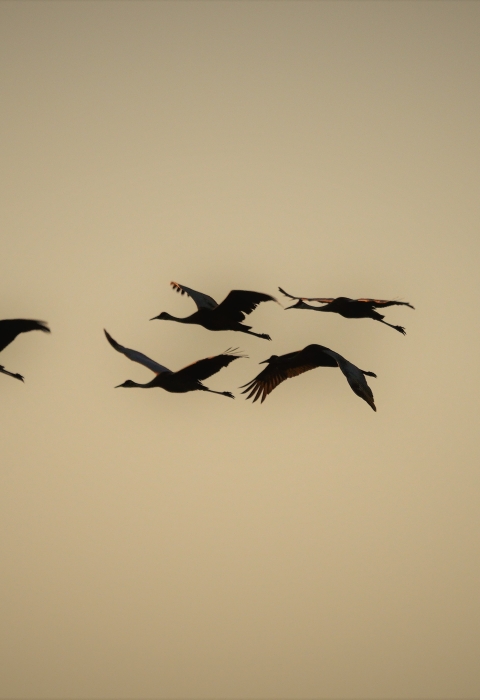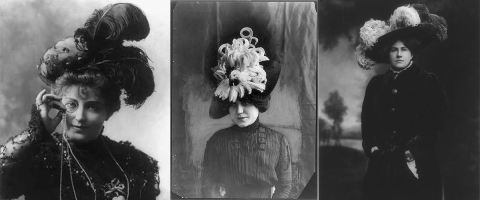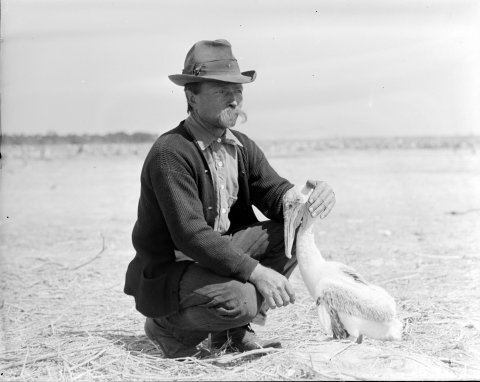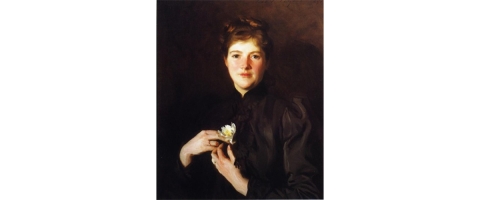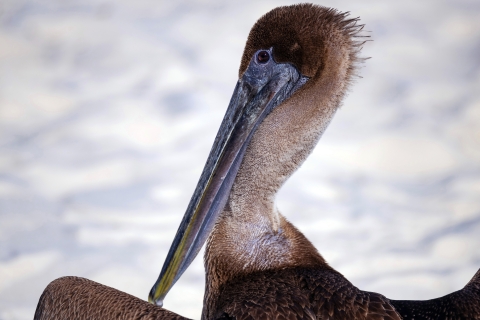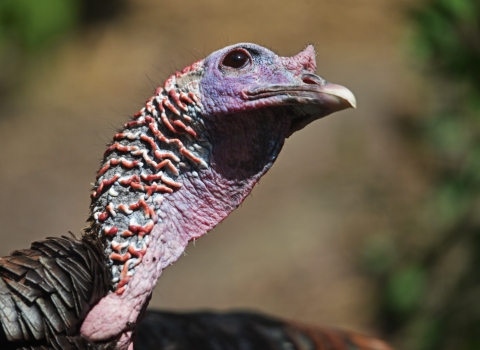Elaborate hats decorated with bird feathers and wings were one of the first mass-produced fashion trends beginning in the 1800s through the early 1900s. They were to that era what skinny jeans were to fashion in 2009. (Everywhere.). Walking down a busy 20th-century street, you could spot a fashionista proudly wearing an entire stuffed bird in her hat.
Because of the high demand for bird hats, birds became the main target for hunters around the world. No regulations existed, and every year millions of birds were killed to supply feathers for hats. Hunters often wiped-out entire bird colonies in a few days. By the early 1900s over 60 species of birds around the world faced extinction.
The First National Wildlife Refuge
Local Florida homesteader, Paul Kroegel, made his home in Sebastian, Florida in 1881 – a decision that changed his life and led to the formation of the first National Wildlife Refuge to protect birds.
His new home overlooked the last rookery for brown pelicans on Florida’s East Coast (Pelican Island). Each year thousands of brown pelicans and other water birds congregated on the five-acre mangrove island to lay eggs and care for their young. Every year, Kroegel stood on his bluff watching the birds arrive, which sparked a passion for birds and conservation.
From his bluff, Kroegel watched his beloved Pelican Island birds start to disappear. The disturbing loss motivated him to act. So, when the market hunters boated up the river, Kroegel sailed out, putting himself between those killing the birds for market and the avian residents of Pelican Island. In addition to physically defending the birds, Kroegel spread the word about his passion for protecting Pelican Island. Frank Chapman, a U.S. Senator, joined Kroegel’s crusade. The senator urged President Theodore Roosevelt to save Pelican Island.
President Roosevelt signed an executive order officially designating Pelican Island as the first Federal Bird Reservation in 1903. Pelican Island eventually became the first National Wildlife Refuge for the protection of nesting birds. Kroegel officially became the first Federal Warden, making $1 a month, and eventually became the first National Wildlife Refuge manager.
Migratory Bird Treaty Act of 1918
Meanwhile, bird hats were still in vogue, and mass hat production was booming. It was clear that to preserve birds for future generations, we needed as many people as possible at the conservation table; enter a 20th-century influencer from Boston, Harriet Hemenway.
She used her clout in high society to make a difference, by hosting tea parties to bring awareness to the issue, and she started a “bird hat” boycott — making them unfashionable. Hemenway’s efforts evolved into a movement, and her group eventually became the Massachusetts Audubon Society.
The “bird hat” campaign led to the Lacey Act of 1900, which prohibited spring shooting, night shooting and interstate wild game sales. That laid the groundwork for The Migratory Bird Treaty Act of 1918, making killing, capturing, selling, trading, and transporting protected migratory bird species illegal. The Act finally ended the plume trade.
A lot has changed since the “bird hat” fell out of fashion. Today, the Migratory Bird Treaty Act protects over 1,000 bird species. And we now have more than 570 national wildlife refuges.
Thanks to the work of people like Kroegel and Hemenway, you can visit Pelican Island National Wildlife Refuge and still see pelicans roosting and nesting on the island.
However, our work is not complete. We still have over 1,300 species listed as threatened or endangered in the U.S., so we still need as many people as possible at the conservation table. And, if you believe one person can’t make a difference, think about the incredible work of Kroegel and Hemenway — two ordinary citizens who laid the foundation for an entire system of National Wildlife Refuges covering all 50 states and 5 U.S. territories that protects 755 million marine acres, and 95 million acres of land.
Additional References
A Beginner Guide to the National Wildlife Refuge System
Migratory Bird Treaty Act of 1918
